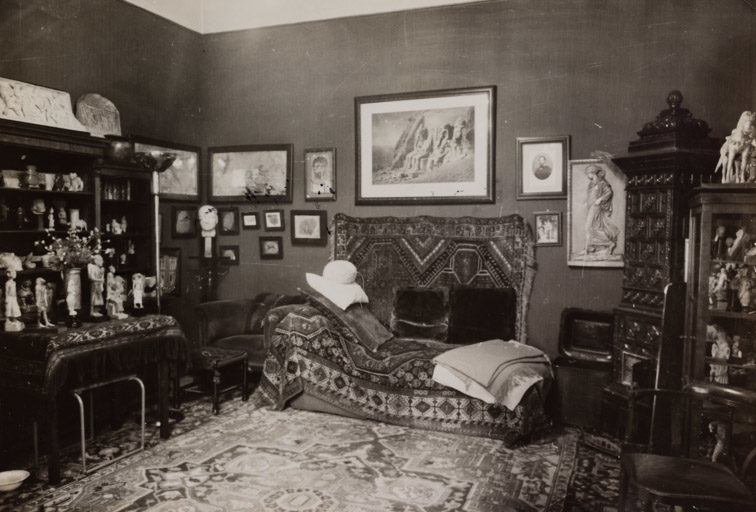
Sigmund Freud’s consulting room at his home in Vienna, 1938
In this strange new world of ‘self-isolation’ and working from home, many of us will be spending a long time in our houses. For Freud, home was always a live/work space, with his study and consulting room sitting alongside the family’s domestic space.
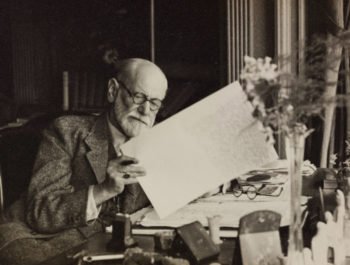
Sigmund Freud at his desk, c. 1935
The Freud family moved to Berggasse 19, Vienna, in 1891.
Sigmund and Martha were already parents to three children when they moved to the apartment, and would have three more by the end of 1895. The home was the headquarters for his work life and family for the next 47 years.
Freud’s study and consulting room were very distinct from the rest of the house. His collection of antiquities, crowded onto every available surface, created a museum-like space long before the establishment of the Freud Museum. The family part of the home, however, was much more conventional. The respectable bourgeois trappings of a doctor’s family in fin-de-siecle Vienna filled the rest of the apartment. In the living and dining rooms Martha Freud arranged family photos in frames, souvenir prints from the family’s travels on the walls, and embroidered cloths on the heavy tables and cabinets.
There was always a feeling of sacred peace and quiet here. The rooms themselves must have been a surprise to any patient, for they in no way reminded one of a doctor’s office but rather of an archaeologist’s study… Everything here contributed to one’s feeling of leaving the haste of modern life behind, of being sheltered from one’s daily cares.
Sergei Pankejeff, “The Wolfman“, on Freud’s study
The distinction between the two spaces no doubt helped Freud divide his work life and home life. He would see patients steadily throughout the day, but break for lunch punctually. This was eaten with the family, in the dining room, on a daily basis. After lunch with his wife and six children, he would return to his study.
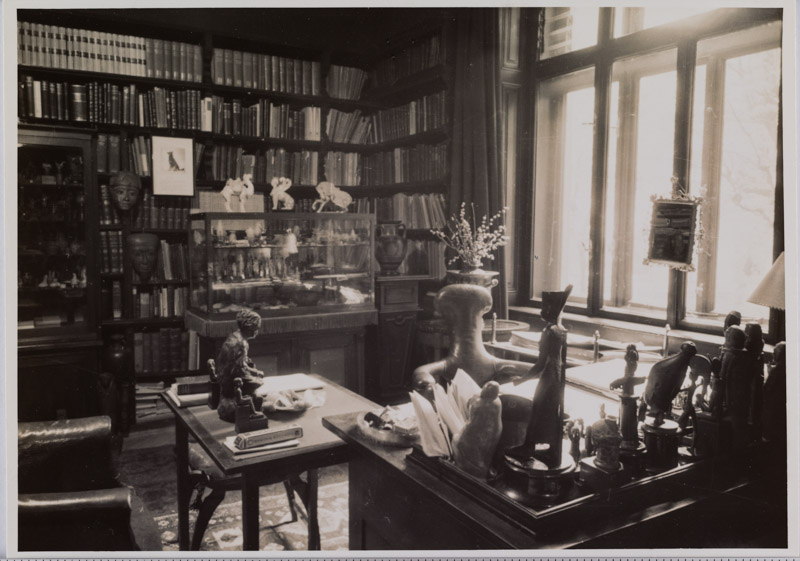
Sigmund Freud’s desk in Vienna, 1938
Work life/Home life
Freud’s collection, like any collection, had to start somewhere. The mid-1890s, when the Sigmund and Martha had finally settled in Berggasse 19 and had the last of their six children, was when Freud began collecting his antiquities, pictures and textiles. After the publication of The Interpretation of Dreams in 1900 and the expansion of his psychoanalytic practice, the collection really began to grow. Hanns Sachs, a member of Freud’s inner circle, observed in 1909 that the collection was “still in its initial stages” but that “some of the objects at once attracted the visitors’s eye.” Visiting for analysis the following year, Sergei Pankejeff found the study to be full: “Here were all kinds of statuettes and other unusual objects, which even the layman recognised as archaeological finds from ancient Egypt.”
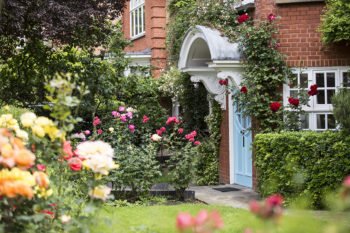
The entrance to 20 Maresfield Gardens
So it would seem that Freud had arranged his work space to best suit his requirements: next to, but entirely distinct from, his family’s living space, filled to the brim with his beloved collection. In 1938 Freud was still working, treating patients and writing what would be his final book, Moses and Monotheism. But the space in which he had lived and worked for 47 years would soon become untenable. After the Anschluss in March 1938, Nazi-occupied Vienna was no longer safe for Freud and his family. By June they were preparing to leave behind the life and home they had so carefully built.
The family arrived in London in early June.
A first they rented a home in Elsworthy Road, Primrose Hill. But on 27th September 1938 they moved to their permanent residence at 20 Maresfield Gardens and started to rebuild their lives. Anna and Martin, Freud’s now-grown children, worked with Paula Fichtl, the family’s housekeeper, to rebuild the study and consulting room. Ernst Freud, already a successful architect, had made adjustments to the home to better suit his father’s needs. The study was set up in as close a re-creation of the Vienna study as possible, Antiquities were put into the same cabinets and rugs placed on the same furniture. Once again, Freud had his live/work space.
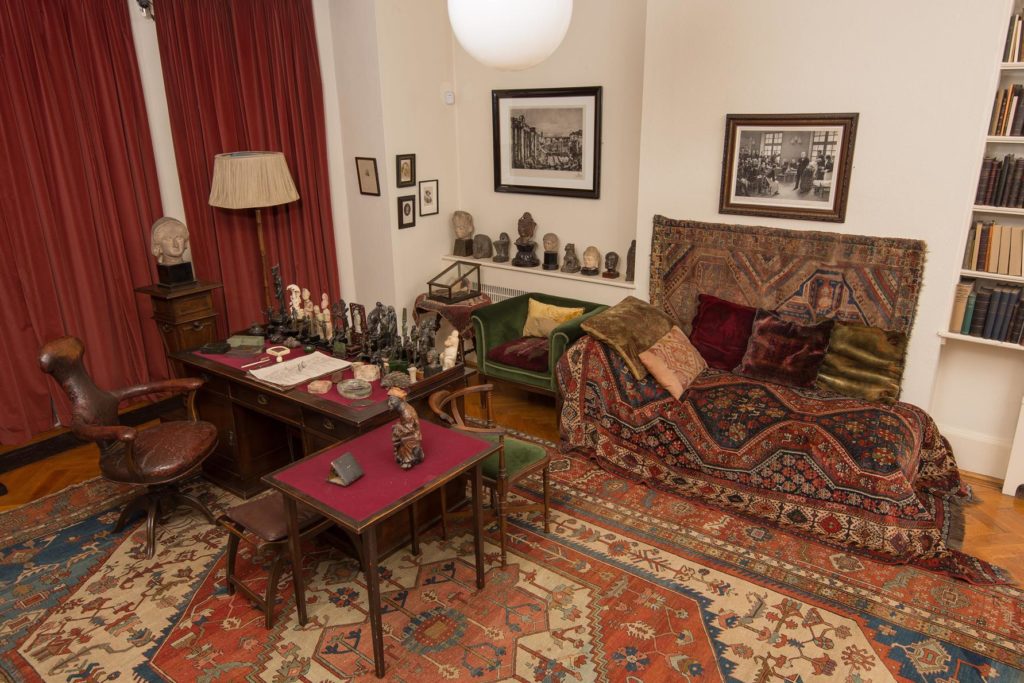
Sigmund Freud’s study at 20 Maresfield Gardens, 2019
During this unprecedented time, our new series Freud at Home will be looking at how Freud and his family lived and worked in their domestic space. We’ll be exploring both Sigmund and Anna Freud’s professional lives, their family dynamic, the furniture that filled their rooms, and what they did when they really needed to escape the four walls of home!



